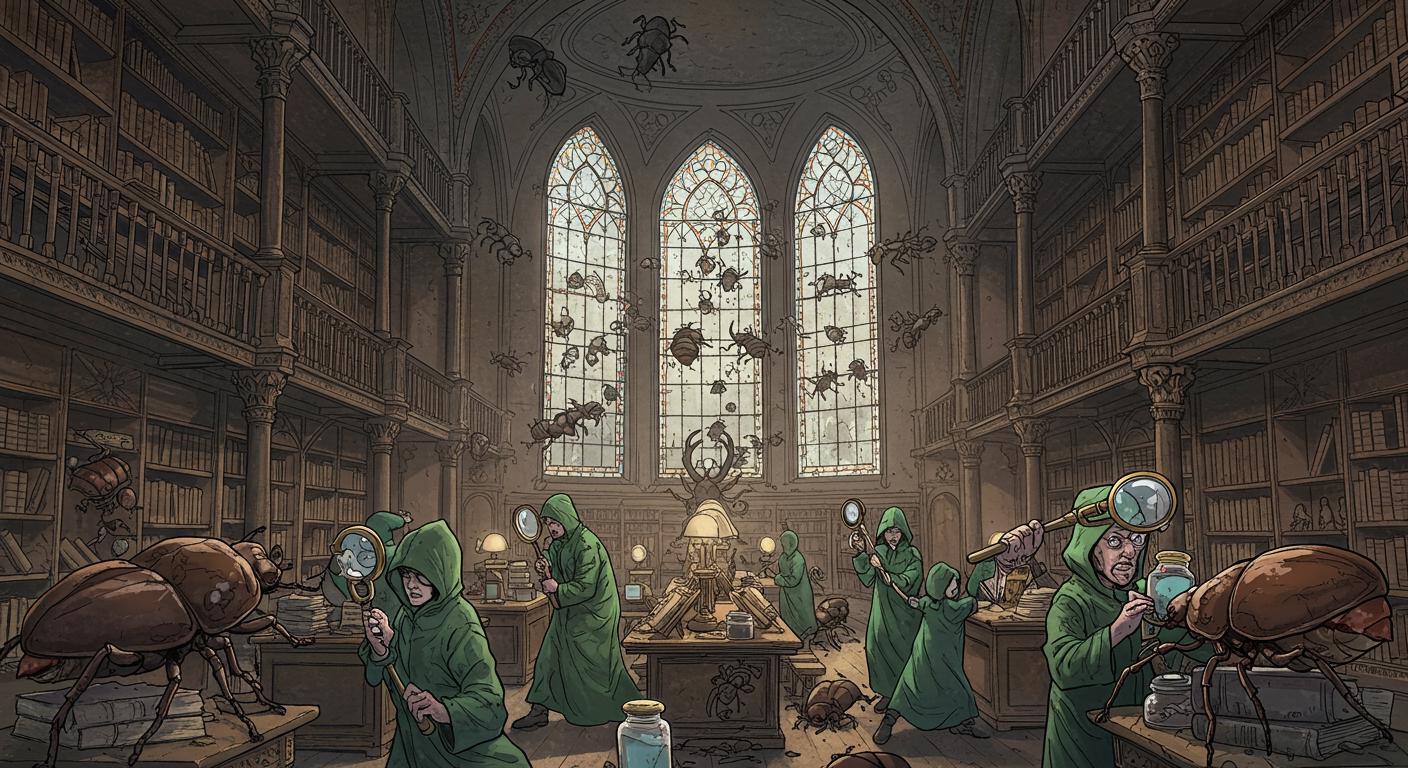Anyone who has spent time elbow-deep in archival stacks learns this inevitability: sometimes, the fiercest threats to history come wrapped in chitin, not in fire or flood. The latest dispatch from Hungary illustrates this all too well. Reporting from the Associated Press and NewsNationNow reveals that the venerable Pannonhalma Archabbey, dating back a casual millennium, is fighting to save roughly 100,000 of its old books from a thriving infestation of drugstore beetles.
The Beetles’ Literary Diet
Irony abounds: the library has survived a thousand years’ worth of empire changes, foreign invasions, and regime churn—only to have a present-day foe arrive in the form of Stegobium paniceum, or the “bread beetle.” Noted in the AP coverage, these tiny insects are typically found snacking on dried foodstuffs, but at Pannonhalma they’ve developed a taste for the gelatin and starch adhesives that hold books together. A section of the library holding some 100,000 handbound volumes—about a quarter of the total collection—was found crawling with intruders after staff spotted telltale dust and, upon closer inspection, neat tunnels gnawed through spines and paper.
Chief restorer Zsófia Edit Hajdu described in NewsNationNow how advanced the infestation had grown: “We’ve never encountered such a degree of infection before.” As the outlet documents, the issue was serious enough that the entire at-risk collection was classified as contaminated and is now being treated as one massive project.
More Than Just Paper
The stakes are substantial. Dating from its founding in 996 CE, the abbey’s library houses what NewsNationNow details as Hungary’s oldest continuous book collection, not to mention a treasure trove of manuscripts predating Gutenberg. Among the prized holdings, the Associated Press highlights 19 codices—including a complete 13th-century Bible—and several hundred manuscripts written before the printing press made mass publishing fashionable.
Ilona Ásványi, the library’s director, told NewsNationNow she is “humbled” by the responsibility of stewarding such heritage: “It is dizzying to think that there was a library here a thousand years ago, and that we are the keepers of the first book catalogue in Hungary.” While the oldest, rarest items are housed separately (and, so far, are uninfected), any volume lost—even one easily replaced in print—represents, as Ásványi puts it, “a piece of culture [that] has been lost.”
Saving the Stack, One Vacuum at a Time
So, what’s the 21st-century remedy for 16th-century paper and a beetle with a guilty pleasure for animal glue? According to both AP and NewsNationNow, each affected book is now spending an extended vacation inside tall, hermetically sealed plastic sacks, from which all oxygen is vacuumed. The goal? Six weeks in a pure nitrogen environment, hopefully deadly to every last beetle and larva. Before being allowed back on the shelves, each tome gets a close manual inspection and a careful, archivist-grade vacuuming. Any book with visible beetle trauma will be marked for later restoration. It’s a painstaking, low-tech process, but hardly the type of battle montage Hollywood would choose for their next epic.
Warming to the Challenge
Interesting wrinkle: the abbey’s staff suspects that rising temperatures, attributed in AP and NewsNationNow coverage to climate change, have played an accelerating role in this crisis. Hajdu explained that beetles, like most pests, thrive in warmer conditions—getting in more life cycles per year and, presumably, more opportunity to sample the literary buffet. While libraries traditionally fended off mold, Hajdu suggests that insect issues are now likely to become less rare thanks to global warming.
Lessons in Guardianship
Preserving a thousand-year-old collection takes more than reverence and careful handling; sometimes, it requires nitrogen, patience, and the willingness to treat every stack as sacred. As Ásványi reminded NewsNationNow, the Rule of Saint Benedict compels her to treat all monastic property, including books, as equal in value to church altar vessels. Many librarians (and let’s face it, more than a few book lovers) would likely raise a duster in agreement.
The ultimate victory here won’t make headlines outside the bookish world. There are no duels or dramatic heists—just the slow fight against creatures nearly invisible to the naked eye. But isn’t it odd to consider that, after surviving marauders and revolutions, the library’s most persistent enemies may always be the smallest? And if that’s the case in Hungary, what hidden threats are quietly at work in the world’s other great, dust-laden memory palaces?







